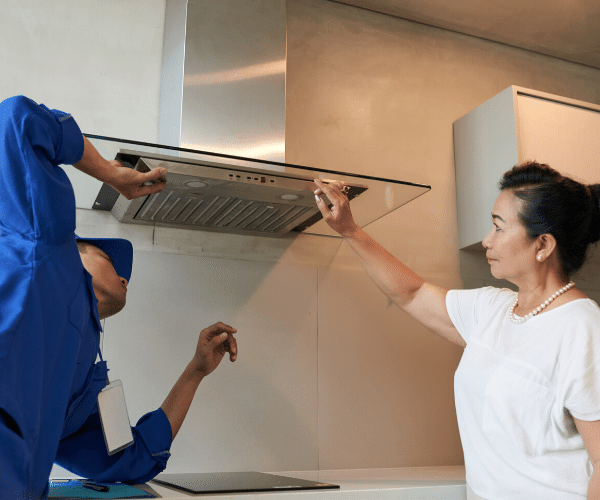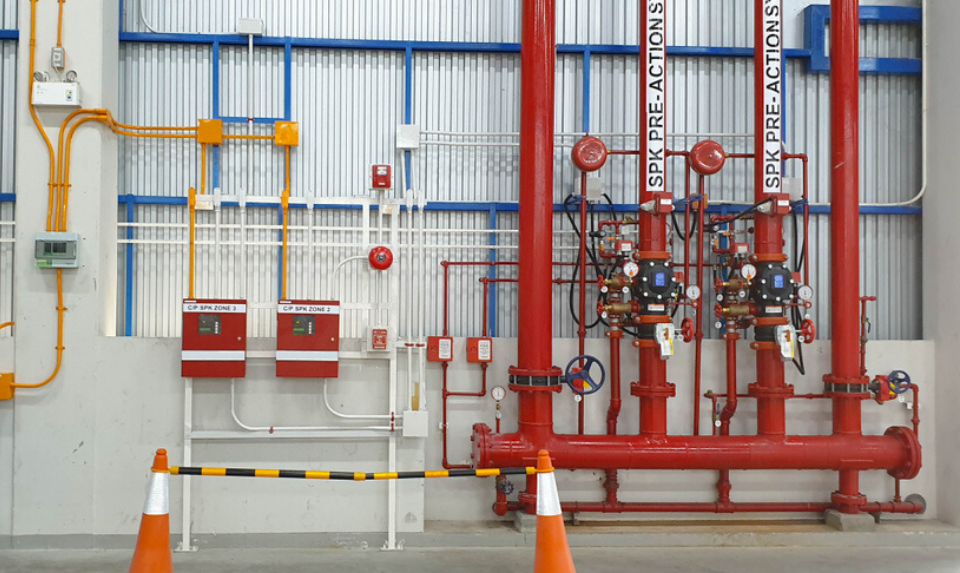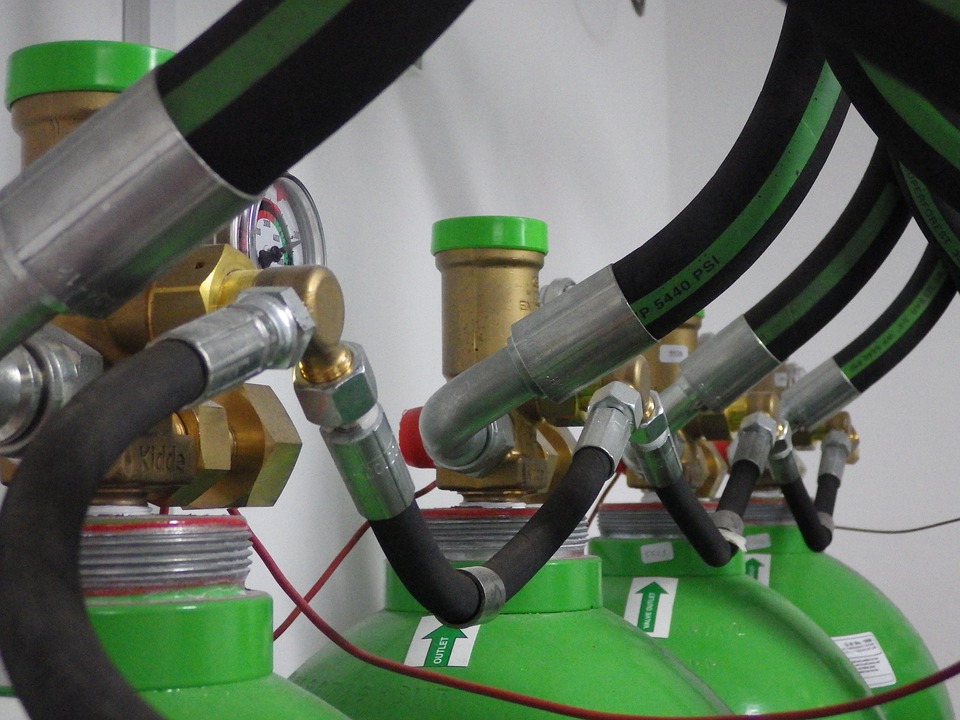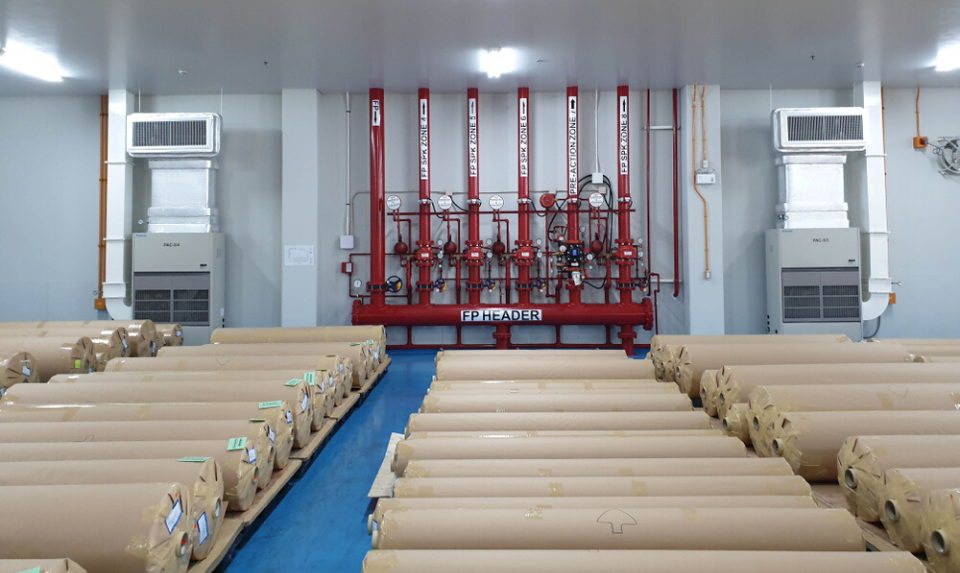A well-functioning kitchen hood vent is a vital piece in any kitchen space. If you are an avid home cook, you especially need a properly maintained kitchen hood.
Continue reading

A well-functioning kitchen hood vent is a vital piece in any kitchen space. If you are an avid home cook, you especially need a properly maintained kitchen hood.
Continue reading
Fire protection is tremendously important in every type of buildings, considering the possible cost of uncontrolled fire and smoke. A dry sprinkler system is amongst the best measures you can set up to make sure occupant safety and to protect assets.

Fire sprinkler systems can be classified into four main types, and the best option depends on the specific circumstances in each cases:
This article will focus on dry sprinkler systems, as well as their applications, advantages and disadvantages.
According to the NFPA 13 standard, a dry sprinkler system is one that applies automatic sprinklers linked to a piping network with pressurized air or nitrogen as a substitute for water. Pressure holds back water thanks to a dry pipe valve, which is a special type of valve intended for this application. The pressure is released when the sprinkler heads set off, opening the dry pipe valve and letting water into the sprinkler piping. For evaluation, a wet-pipe system is permanently filled with water, which is released the moment one sprinkler head opens.
Dry sprinkler system acquired its name for the reason that the piping is usually empty of water, only filling up when one or more sprinkler heads sets off in reaction to heat.
The dry pipe valve is intended to be held back by pressure, and it opens when the pressure in the sprinkler piping drops to 6 psi.
Since piping is dry, there can be some setbacks of up to 60 seconds while water travels among the valve and the sprinkler head. A drawback of dry pipe systems is that fire can stretch for a little longer time before the affected zone is showered with water.
An alarm line is linked to the valve assembly, and it sets off when the valve opens.
It is very essential to maintain the dry pipe valve and related equipment in an area where temperatures will not drop beneath the freezing point of water. Or else, the supply may possibly be blocked with ice, and water will not surge even if the dry pipe valve opens.
Dry pipe valves are set up at the end of the fire sprinkler riser, sorting out the pressurized piping network from the water supply.
As described above, these valves are loaded by a pressure difference – the sprinkler piping usually has a pressure 5 times higher than the water supply to grip the valve closed. A usual system side pressure is 40 psi.
In a number of dry sprinkler system models, there is a little quantity of priming water to accomplish a superior seal.
There is an in-between compartment with a water flow lever and an alarm port that can be linked to a water motor gong outside the building. Usually, this piping section has no water and is not pressurized.
NFPA standards involve pressure-type flow switches in dry pipe sprinkler systems. Vane-type switches aren’t allowed, while the water flow is extremely strong when the valve opens and it can harm the paddles of vane-type switches.
The dry sprinkler system pressure must be condensed to 6 psi to open the dry pipe valve, but there is a low pressure switch that transmits an alarm if the pressure drops 10 psi underneath the actual value.
When this switch sets off, it does not automatically mean that a sprinkler head has opened – the drop can be caused by concerns such as leaks and compressor malfunction, and the system should be checked to fix the problem before the dry pipe valve opens.
The NFPA 72 standard need air pressure to be observed, in order to perceive a change of 10 psi below standard air pressure.
There are many accessories accessible for dry pipe valves, with tasks that progress system operation.
Accelerators help the dry valve operate quicker, as implied by their name. They redirect air flow in the sprinkler piping to decrease pressure faster, lowering the opening time of the valve. Hence, reduce the time necessary to deliver water to the affected area once a sprinkler head opens.
Air preservation devices keep ample pressure in the sprinkler piping, by supplying more air when a small pressure loss is perceived.
Air dryers get rid of moisture within the sprinkler piping, as implied by their name.

Given that a dry sprinkler system is not packed with water, they are the best alternative in applications with freezing temperatures. As stated in the NFPA 13 standard, these sprinkler systems are intended for applications where the ambient temperature can’t be kept at a minimum of 40°F every time. A dry sprinkler system can be usually found in spots prone to freezing, such as the following: